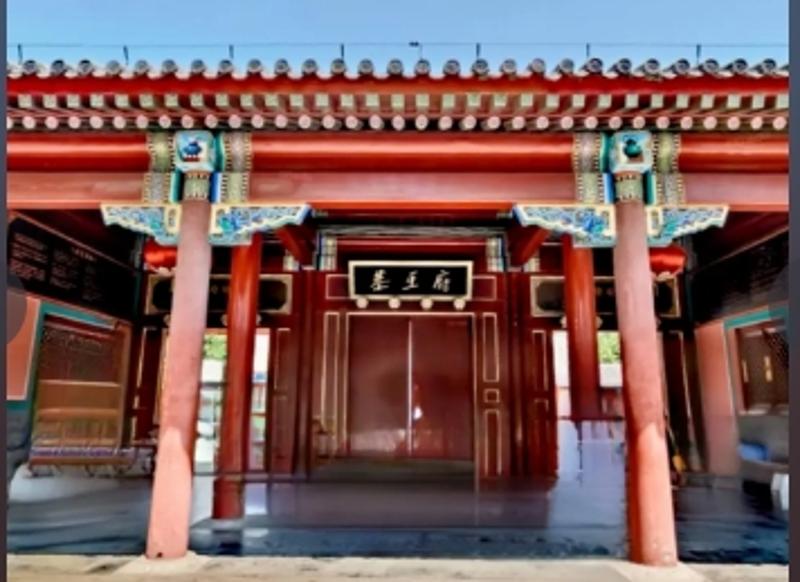Prince Gong's Mansion: A Precious Relic in the Ancient City of Beijing
Prince Gong's Mansion, also known as the Prince Gong Palace, is a museum and tourist attraction located in Xicheng District, Beijing, north of the capital city. Since ancient times, Prince Gong's Mansion has attracted countless visitors with its long history, exquisite architecture, and beautiful gardens. This article will provide a detailed introduction to the origin, history, architectural composition, restoration and future, gardens, and visitor guide of Prince Gong's Mansion, offering a comprehensive guide to exploring this precious relic in the ancient city of Beijing.
Reference: Prince Gong’s Mansion

1. Origin of the Name Prince Gong's Mansion
Prince Gong's Mansion is named after Prince Gong, the sixth-generation ancestor who built it during the reign of the Qing Dynasty Emperor Qianlong. According to legend, Prince Gong was granted the title "Gong" as a reward for his contributions, hence the mansion's name. The name of Prince Gong's Mansion carries profound historical and cultural significance.
2. History of Prince Gong's Mansion
Prince Gong's Mansion was built during the Qing Dynasty under the reign of Emperor Qianlong to serve as the residence of Prince Gong. Over time, the mansion underwent several renovations and restorations, witnessing the vicissitudes of the Qing Dynasty to modern times. Throughout its long history, Prince Gong's Mansion has accumulated rich cultural heritage, becoming a dazzling gem in the city of Beijing.
3. Architectural Composition of Prince Gong's Mansion
Prince Gong's Mansion is renowned for its unique architectural style. The mansion complex includes main buildings, auxiliary structures, courtyards, etc., forming a typical architectural ensemble of the Qing Dynasty. The main buildings feature traditional wooden structures, intricately carved beams and painted rafters, grandeur, showcasing the exquisite craftsmanship and elegant design of Qing Dynasty architecture.
| Category | Description |
|---|---|
| Main Building | Utilizes imitation wooden structure, with carved beams and painted rafters, grand and majestic, embodying the exquisite craftsmanship of Qing Dynasty architecture |
| Auxiliary Building | Includes side rooms, annex halls, etc., laid out logically, complementing the main buildings in architectural style |
| Courtyards | Arranged orderly, shaded by green trees, creating a tranquil living atmosphere |
4. Restoration and Future of Prince Gong's Mansion
As time goes by, the buildings of Prince Gong's Mansion gradually aged, requiring regular maintenance and restoration. The government and relevant departments have carried out multiple repairs to protect its unique historical and cultural value. In the future, Prince Gong's Mansion will continue to serve as a museum and tourist attraction, showcasing its long history and cultural charm to the world.
5. Gardens of Prince Gong's Mansion
The gardens of Prince Gong's Mansion are one of its unique features, blending Chinese and Western garden styles. Within the courtyards, lush trees, clear lakes, and exquisite rockeries create a serene and elegant leisure space for visitors.
6. Visitor Guide to Prince Gong's Mansion
To better explore Prince Gong's Mansion, visitors can learn the following visitor guide:
- - Opening Hours: 9:00 am to 5:00 pm daily.
- - Ticket Prices: Adult ticket 50 RMB, student ticket 25 RMB.
- - Notes: Visitors should abide by relevant regulations when entering Prince Gong's Mansion, refrain from touching cultural relics without permission, and maintain a respectful attitude during the visit.
7. Recommended Itinerary for Prince Gong's Mansion
For first-time visitors, the following itinerary is recommended:
- 1. Admire the Main Buildings: Begin by visiting the main buildings to appreciate their magnificent architectural style.
- 2. Stroll Through the Courtyard Gardens: Take a leisurely stroll through the courtyard gardens to experience the serene atmosphere and admire the beauty of the scenery.
- 3. Visit the Museum: Explore the museum inside Prince Gong's Mansion to learn more about its history and culture.
Prince Gong's Mansion, as an important cultural landmark in Beijing, not only showcases the exquisite craftsmanship of ancient Chinese architecture but also carries rich historical and cultural significance. Visitors to Prince Gong's Mansion can not only admire its beautiful buildings and gardens but also experience the profoundness of Chinese traditional culture.
Q1: How did the name of Prince Gong's Mansion come about?
A1: The name of Prince Gong's Mansion is closely related to Prince Gong Yixin, an important figure in the Qing Dynasty. As an influential politician in the late Qing Dynasty, during his reign, this mansion became a center for political, cultural, and artistic exchanges. Therefore, this mansion was named after him and became Prince Gong's Mansion.
Q2: What is the historical evolution of Prince Gong's Mansion?
A2: Prince Gong's Mansion has a long history. Its predecessor was originally He Shen's residence. He Shen was a favorite minister of the Qianlong Emperor during the Qianlong period, and his residence was built on a grand scale and was magnificent and splendid. Later, this residence underwent changes in ownership and eventually became Prince Gong Yixin's residence. Prince Gong's Mansion has witnessed the historical process from the peak to the decline of the Qing Dynasty and has become a witness to history.
Q3: What are the architectural characteristics of Prince Gong's Mansion?
A3: Prince Gong's Mansion has a unique architectural composition. The mansion is divided into three courtyards, front, middle, and back, with a rigorous architectural layout and magnificent momentum. The buildings within the mansion are dominated by the characteristic architectural style of red walls, black tiles, corridor passages, and ridge eaves, which demonstrate the charm of ancient Chinese architecture. In addition, Prince Gong's Mansion also collects a large number of cultural relics and works of art, such as calligraphy and painting, jade, and ceramics. These precious cultural relics not only showcase the artistic achievements of the Qing Dynasty but also reflect the social style and people's living conditions at that time.
note: This return of all, without the author's permission, may not be reproduced